Bringing Dried Flowers to Life in Modern Spring Arrangements
Spring is finally here, and I couldn’t be more excited to share my latest obsession: incorporating dried flowers into fresh spring arrangements. There’s something magical about the way preserved blooms complement the vibrant colors of spring, creating depth and texture that feels both timeless and cutting-edge.
I’ve spent years experimenting with different floral techniques, but this particular approach has brought a whole new dimension to my seasonal decorating. Let me take you through why dried flowers deserve a place in your spring home, and how you can create stunning arrangements that balance the old and the new.



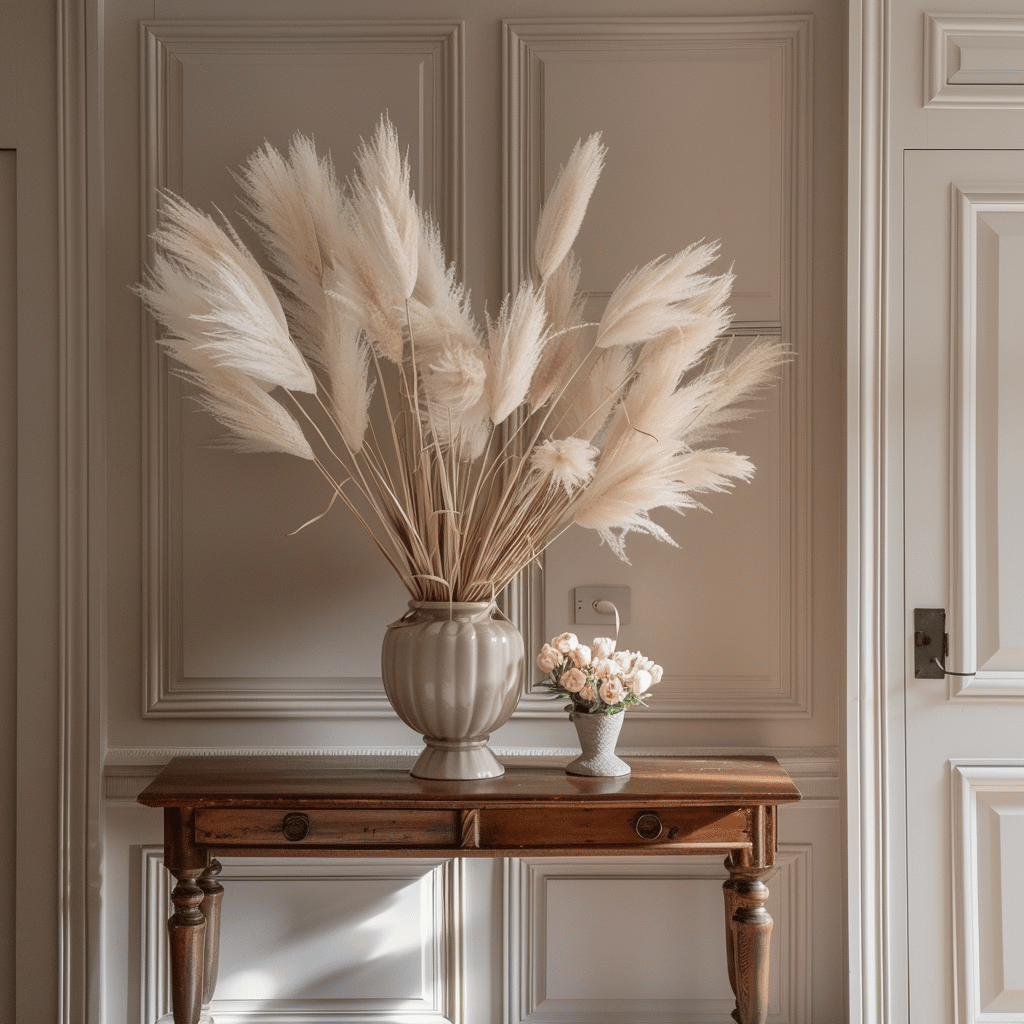
Why Dried Flowers Are Making a Comeback
Remember when dried flowers meant dusty arrangements gathering cobwebs in your grandmother’s house? Those days are long gone. Today’s preserved botanicals are sophisticated, stylish, and surprisingly versatile. I first rediscovered dried flowers three years ago while browsing a local flower market, and I’ve been incorporating them into my designs ever since.
Modern drying techniques have revolutionized how we view and use these botanical treasures. Colors are more vibrant, textures more interesting, and the overall aesthetic much more contemporary. I’m constantly amazed by the variety available now – from delicate baby’s breath to statement-making pampas grass.
The sustainability factor is another huge plus. In a world increasingly concerned with environmental impact, dried flowers offer a way to enjoy beautiful arrangements that last for months, not days. I’ve found this particularly appealing as I’ve tried to reduce waste in my home.
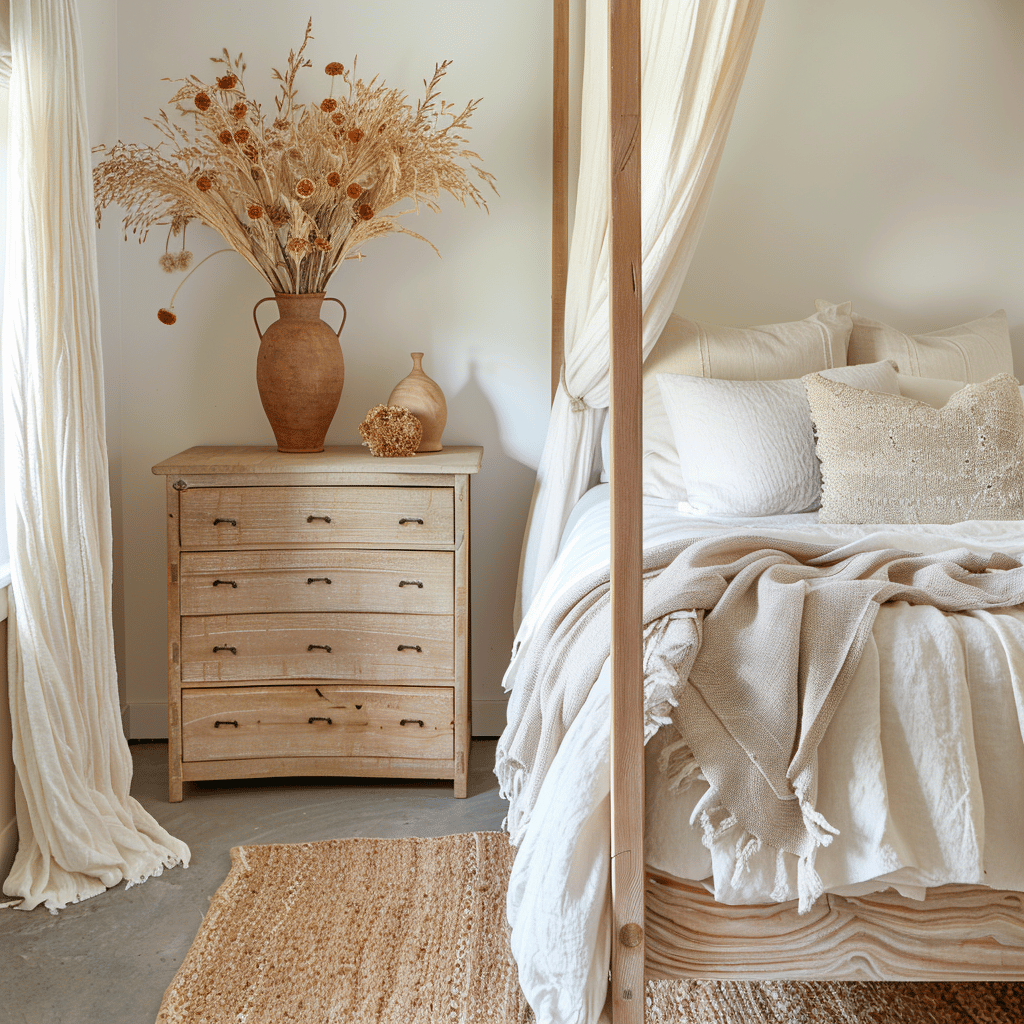
Pairing Dried Elements with Fresh Spring Blooms
The magic happens when you start mixing dried elements with fresh spring flowers. The contrast creates a visual story that feels both grounded and alive. I love how the muted tones of dried botanicals highlight the vivid colors of fresh tulips, daffodils, and hyacinths.
Start simple by adding a few stems of dried lavender or bunny tails to a bouquet of fresh daffodils. The textural contrast is immediate and eye-catching. As you get more comfortable with the technique, try creating more complex arrangements with multiple dried and fresh components.
Some of my favorite combinations include:
- Dried cotton stems with fresh pink tulips
- Preserved eucalyptus with yellow daffodils
- Dried wheat stalks with purple hyacinths
- Preserved ferns with fresh white narcissus
I’ve found that aiming for a 70/30 ratio – 70% fresh flowers to 30% dried elements – creates the most balanced look for spring arrangements. This proportion keeps the arrangement feeling seasonal while adding interesting textural elements.
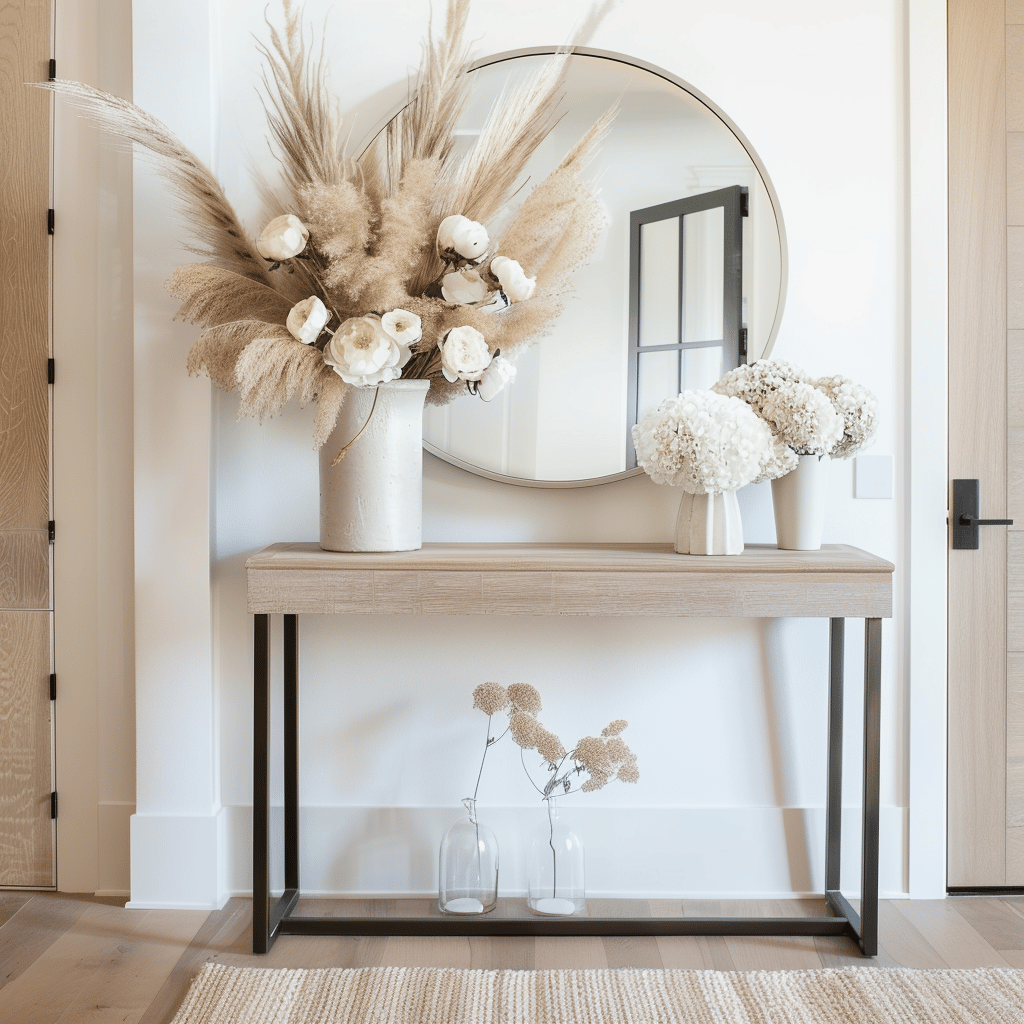
Essential Dried Flowers for Spring Arrangements
Not all dried flowers work equally well for spring designs. Through much trial and error, I’ve identified several varieties that complement spring aesthetics particularly well:
Bunny Tails (Lagurus ovatus): These fluffy little stems add whimsical texture and a neutral color that pairs beautifully with any spring palette. I keep these on hand all year round.
Dried Lavender: The soft purple hues and distinctive fragrance make lavender a perfect companion to spring blooms. I particularly love combining it with yellow flowers for a striking color contrast.
Preserved Eucalyptus: Available in various colors from silver-green to burgundy, preserved eucalyptus adds flowing lines and subtle color to arrangements. The longevity is impressive – I’ve had stems last for over a year.
Bleached Ruscus: This creates a lovely architectural element in creamy white that complements pastel spring colors beautifully. It’s become one of my go-to fillers.
Dried Billy Buttons (Craspedia): These cheerful yellow balls add pops of color and interesting texture. I find they bring a contemporary edge to any arrangement.
Dried Thistle: Available in natural blue-purple or bleached varieties, thistles add dramatic texture and a wild, natural feel that contrasts beautifully with more delicate spring flowers.

Sourcing Quality Dried Flowers
The quality of dried flowers varies enormously, and I’ve learned this lesson the hard way. After receiving a disappointing batch of brittle, faded stems from an online order, I now prioritize quality sourcing.
Local florists often carry a selection of premium dried flowers, and it’s worth the extra cost for pieces that will last. I’ve built relationships with several florists in my area who now set aside particularly beautiful dried specimens when they know I’ll be visiting.
If shopping online, look for specialists rather than general marketplaces. Check reviews carefully and don’t hesitate to contact sellers with questions about their drying process. Photos can be deceiving, so understanding how the flowers were preserved can tell you a lot about their quality.
I’ve also started drying my own flowers, which has been both rewarding and cost-effective. Late summer blooms like hydrangeas, roses, and strawflowers dry beautifully and can be stored for spring arrangements. The control over color and quality has made this a favorite weekend project.
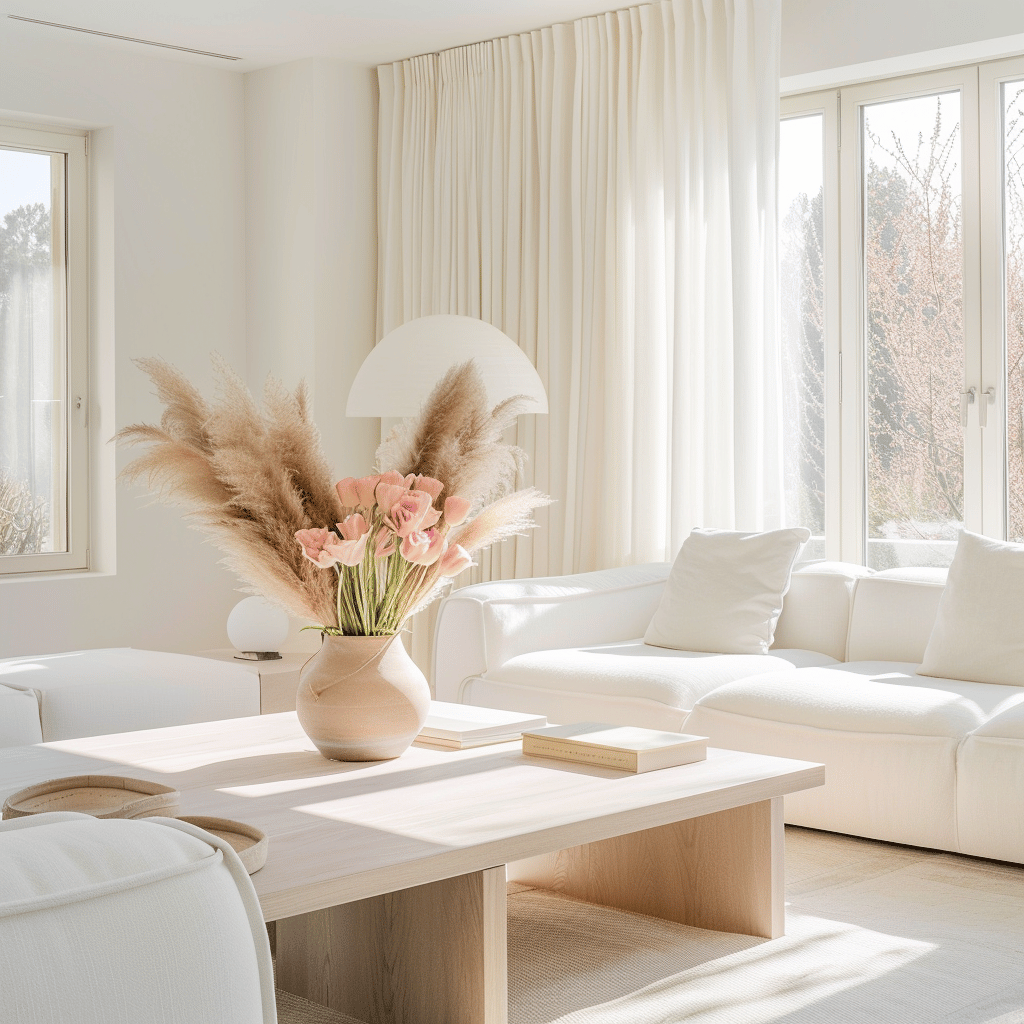
Creating Long-Lasting Spring Arrangements
One of the biggest advantages of incorporating dried elements is the longevity they bring to arrangements. I’ve developed some techniques that help maximize the lifespan of these mixed designs:
Use separate water sources: When combining fresh and dried elements, keep the dried stems from sitting in water. I often use floral foam with distinct dry and wet sections, or create arrangements where dried elements are positioned above the waterline.
Consider a staged approach: Start with an arrangement that’s heavy on fresh flowers, then gradually replace dying blooms with dried elements. This evolving display can last for weeks with minimal maintenance.
Mind the humidity: Dried flowers can absorb moisture from the air, causing them to soften or even develop mold. Keep arrangements away from bathrooms and kitchens, where humidity levels fluctuate dramatically.
Gentle cleaning: Dust can be a challenge with dried elements. I use a soft makeup brush to gently dust my dried flowers when needed, keeping them looking fresh alongside new blooms.

Color Palettes for Modern Spring Arrangements
The color story you create will define the mood of your arrangement. After experimenting with countless combinations, I’ve found several palettes that work particularly well for spring arrangements incorporating dried elements:
Soft Neutrals with Pops of Yellow: Combine bleached dried elements (pampas, bunny tails, bleached ruscus) with fresh yellow daffodils or tulips. The contrast of texture and color creates a sophisticated yet cheerful arrangement.
Dusty Pink and Sage: Dried pink strawflowers or preserved roses paired with fresh white blooms and eucalyptus create a romantic, feminine arrangement perfect for spring. I used this combination for a friend’s bridal shower last April, and the photos were stunning.
Lavender and Cream: Dried lavender, purple statice, and fresh white narcissus or hyacinths create a fragrant, spring-inspired design with beautiful color harmony. This has become my signature Easter centerpiece.
Vibrant Contrasts: For a more dramatic look, try pairing bright fresh tulips in magenta or orange with blue thistle and natural wheat tones. The combination of bright and neutral creates a balanced arrangement that feels both modern and timeless.
When selecting your palette, consider the room where the arrangement will live. I find that linking one or two colors from the arrangement to elements already in the space creates a cohesive look.

Containers That Complement Dried-Fresh Arrangements
The vessel you choose can dramatically impact the look of your arrangement. Contemporary containers often work best for these mixed designs, creating a pleasing contrast with the natural elements:
Matte Ceramic Vases: These provide a modern, tactile background that complements both dried and fresh elements. Neutral colors like white, black, or sage green let the flowers take center stage.
Glass Containers with Interesting Shapes: I love using asymmetrical or geometric glass vases to add a contemporary edge to arrangements. The transparency allows you to create clear separation between dried and fresh elements.
Woven or Natural Fiber Baskets: For a more relaxed spring look, try shallow basket containers. They pair beautifully with dried elements and create a cohesive natural aesthetic.
Vintage Brass or Copper Vessels: The warmth of these metals creates a beautiful contrast with both dried and fresh flowers. I’ve collected several unique pieces from thrift stores that have become favorites for my spring arrangements.
I recommend having a variety of containers in different heights and widths. This allows you to create arrangements for different spaces and purposes throughout the spring season.
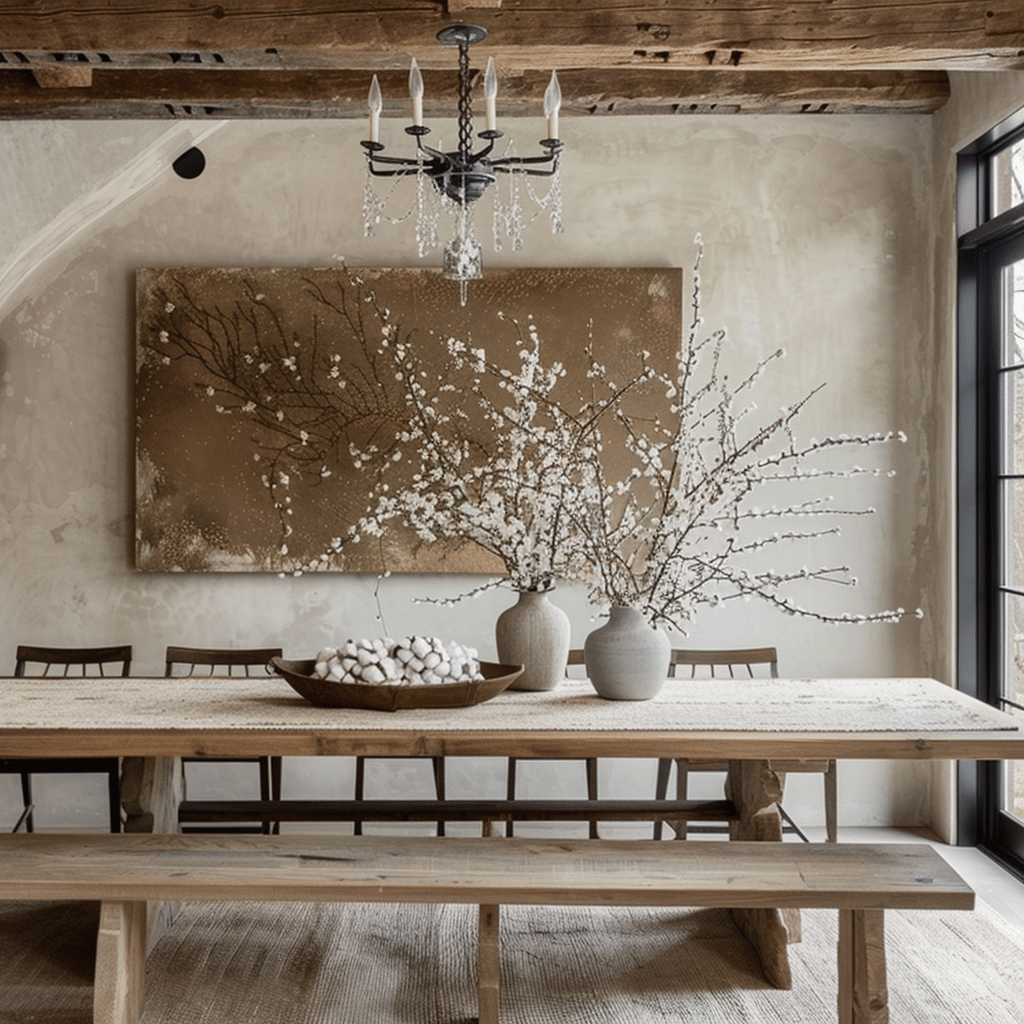
Styling Dried-Fresh Arrangements in Your Home
The placement of your arrangements can significantly impact their effect on your space. I’ve found certain locations particularly well-suited to these mixed compositions:
Entryway Statements: A larger arrangement with substantial dried elements like pampas or palm fronds mixed with fresh spring blooms makes an impressive welcome in an entryway. This is where I place my most dramatic seasonal creations.
Dining Table Centerpieces: Lower, wider arrangements work well here. I often create these with a higher proportion of fresh flowers but add dried elements for texture and height variation. Remember to keep them low enough for conversation across the table.
Bedside Arrangements: Small bud vases with just a few fresh flowers and one or two dried elements bring the spring feeling into private spaces. The subtle scent of fresh flowers combined with the texture of dried elements is a lovely way to wake up.
Bathroom Accents: If humidity isn’t too high, small arrangements of primarily dried elements with perhaps just one or two fresh flowers can add a spa-like quality to bathrooms. I replace the fresh elements weekly to maintain freshness.
Bookshelf Styling: Tiny bud vases with minimal compositions make beautiful accents among books and objects. Try a series of small arrangements rather than one large display for a curated look.
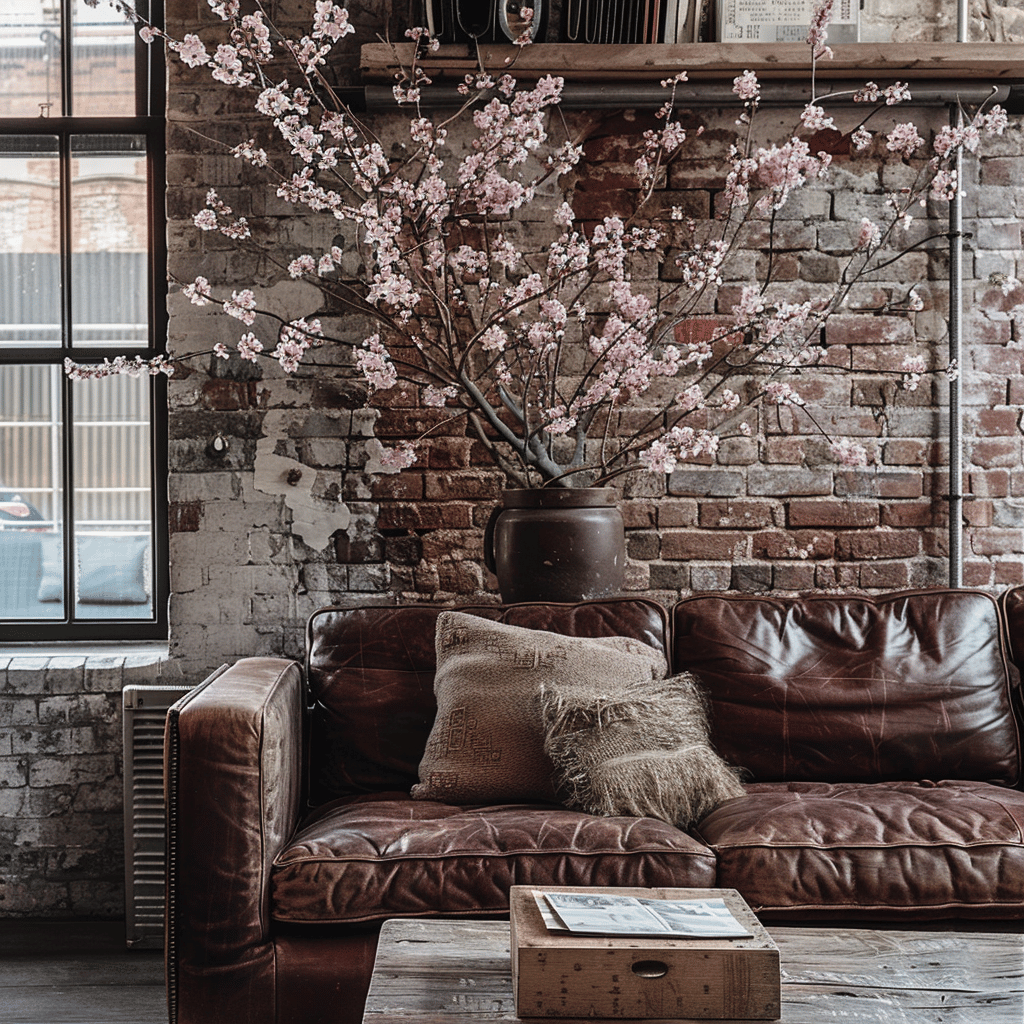
DIY: Creating Your First Dried-Fresh Spring Arrangement
If you’re new to working with dried flowers, this simple project is a perfect starting point. Here’s how I create one of my favorite spring arrangements:
Materials:
- 3-5 stems of fresh tulips in your preferred color
- 2-3 stems of dried bunny tails
- 1-2 stems of preserved eucalyptus
- 1 stem of dried thistle or artichoke
- A small handful of fresh greenery (I like spring-harvested mint or lemon balm)
- A medium-sized ceramic vase
- Floral scissors or sharp garden shears
- Floral tape (optional)
Steps:
- Fill your vase about two-thirds with fresh, room-temperature water.
- Start by positioning your eucalyptus to create a loose framework, allowing it to drape naturally over the edges of the vase.
- Add your fresh tulips, cutting stems at angles and varying the heights slightly for a more natural look.
- Intersperse the fresh greenery to add movement and a spring-like freshness.
- Finally, add your dried elements – position the bunny tails to add height and the thistle as a focal point.
- Stand back and assess your arrangement, making adjustments as needed. Look for balance in color, texture, and form.
What I love about this approach is its forgiving nature. The dried elements maintain their structure, giving you a reliable framework even if you’re new to flower arranging.

Preserving Your Own Spring Flowers for Future Arrangements
One of my favorite sustainability practices is preserving spring flowers to use in later seasons. This creates a beautiful cycle of use and reuse in my floral designs.
The simplest method I use is hanging drying. I gather small bunches of flowers (daffodils, tulips, and narcissus can all be dried this way), tie them with twine, and hang them upside down in a dark, dry place with good air circulation. In about two to three weeks, they’re perfectly preserved.
For more delicate spring blooms, I’ve had success with silica gel. This method preserves color better than air drying. Simply place your flowers in an airtight container, cover completely with silica gel, and seal for about a week. The results are much more vibrant than hang-dried flowers.
Pressing is another wonderful technique, especially for the delicate wildflowers of early spring. I place blooms between absorbent paper in heavy books for a few weeks, then use these pressed flowers to decorate cards or create framed arrangements that complement my fresh displays.
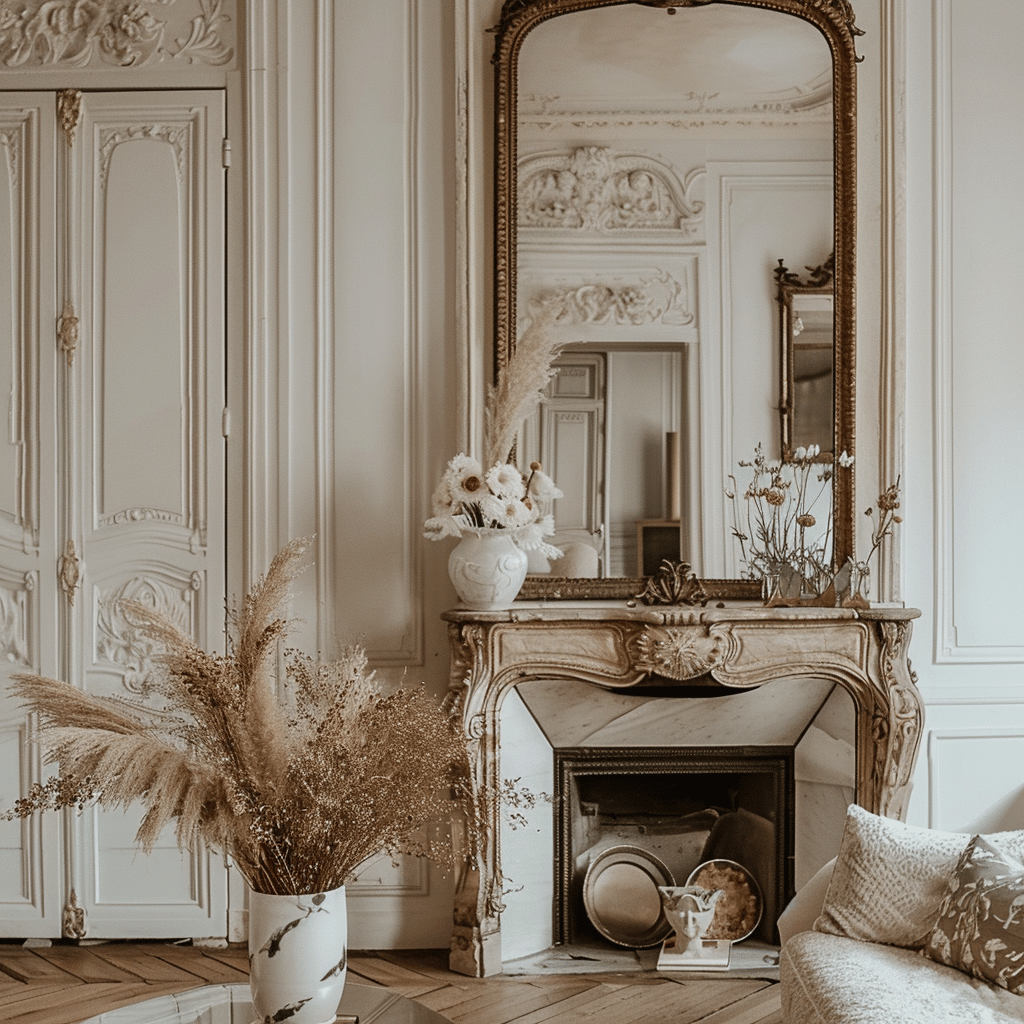
Conclusion: Embracing the Beauty of Contrast
The magic of combining dried and fresh elements in spring arrangements lies in the beautiful tension between permanence and transience. There’s something poetically appropriate about this combination as we emerge from winter into the renewal of spring.
I’ve found that these arrangements tell a more complex story than either all-fresh or all-dried compositions. They speak to the cyclical nature of seasons, the beauty in both new growth and weathered maturity. In our often disposable culture, there’s something deeply satisfying about creating displays that honor both the fleeting beauty of fresh blooms and the enduring charm of preserved botanicals.
As you experiment with your own dried-fresh arrangements this spring, I encourage you to approach them with playfulness and creativity. There are no strict rules here – just the opportunity to create something uniquely beautiful that bridges past and present, bringing multiple dimensions of natural beauty into your home as we celebrate the return of spring.
I hope you’ve found inspiration in these ideas. I’d love to see your own creations if you try these techniques – tag me in your photos or share your experiences in the comments below!
If you love home decor and interior design as much as I do, check out these other articles I think you might like.
Mediterranean Spring : Warm Tones & Textural Spring Elements
Brutalist Spring Softening Raw Concrete with Spring Elements

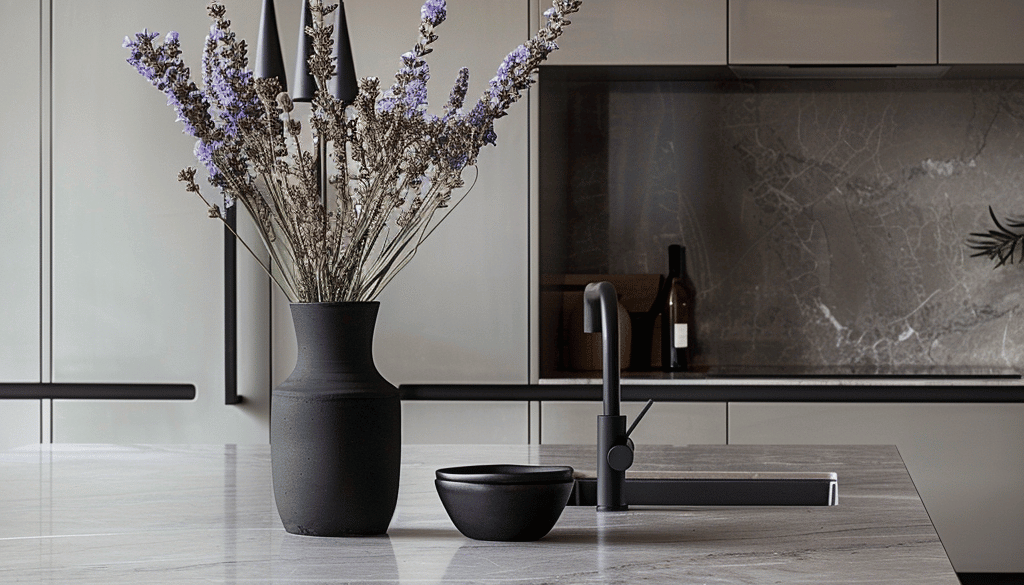



How to Style with Fresh Spring Flowers and Botanicals
April 28, 2025 @ 1:01 pm
[…] Bringing Dried Flowers to Life in Modern Spring Arrangements […]
Spring Centerpiece : Fresh Ideas to Brighten Your Home
April 29, 2025 @ 1:59 pm
[…] articles I think you might like. How to Style with Fresh Spring Flowers and Botanicals Bringing Dried Flowers to Life in Modern Spring Arrangements Brutalist Spring Softening Raw Concrete with Spring […]